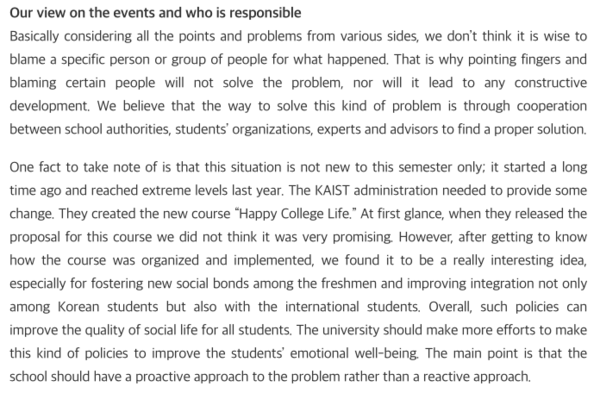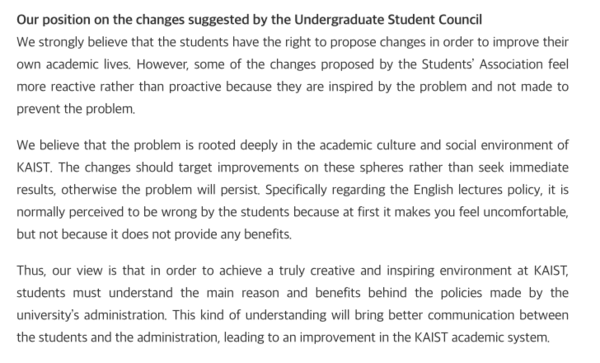Even though KAIST is the South Korean gold standard for top-tier research institutions, its conduciveness to cultural diversity — or rather, lack of — remains its kryptonite in the global landscape. Not only is the KAIST international community underrepresented in both the student population and faculty, but KAIST’s concern for their welfare is often a subject of heavy scrutiny across different aspects. The plight of the international community, however, is only a singular element of KAIST’s overall objective to become a “global university”. Although it has recently been explicitly stated as part of the Vision 2031 campaign, the ambition has long been visualized even in past administrations.
Globalization of KAIST: Humble Beginnings
KAIST first opened its doors to students of international background as far back as 1984. At the time, KAIST was only a graduate school, and its main campus was in Seoul — where the current Graduate School of Business is now located. What became KAIST’s undergraduate school was then a separate institution called the Korea Institute of Technology, located in what we now know as the Daedeok Main Campus. Fast forward to 1998, when the two institutions merged and relocated here in Daejeon, and KAIST began admitting international students more officially — in pursuit of their “global planning”. In 2001, KAIST welcomed a total of 21 graduate international students from 13 different countries. The first undergraduate international student was admitted in 2002. Two years later, the KAIST International Students Association (KISA) was formed.
The largest single leap towards the goal of globalization was the inauguration of Robert B. Laughlin as the first international KAIST president. The Nobel Prize winner and Stanford professor was directly invited to take the role by former South Korean President Moo Hyun Roh. Laughlin had ambitions to revitalize KAIST and transform it into a world-class research institute. His proposed reforms included increasing the undergraduate student population, toughening the selection of faculty members, privatizing the institution, and creating undergraduate degrees in medicine, law, and business. But these received much criticism from faculty members, who reiterated the premise of KAIST being a research-oriented institute, and highlighted concerns that his reforms violated the ethos of KAIST’s establishment. 89% of the professors who participated in the vote for his term extension were against the renewal of Laughlin’s contract, marking the end of his abrupt two-year presidential term. The consensus was that his philosophy was in contrast to KAIST’s, though some attributed the outcome to his leadership inexperience.
Nam-pyo Suh Shakes the KAIST Community
Korea-born MIT professor Nam-pyo Suh succeeded Laughlin. Suh assumed the presidency with a more ambitious goal than his predecessor: to be one of the top ten science-and-technology universities in the world. The student and faculty bodies had high expectations for him to pioneer KAIST’s status as a global research institute, while empathizing with Korean culture. His Korean origin therefore provided an advantage in overcoming the intrinsic resistance to change that resulted in Laughlin's dismissal. In fact, Suh was able to implement some of the reforms initiated by Laughlin. His term firstly saw a great increase in the number of international undergraduate students entering KAIST, with 51 of the 700 admitted freshmen in 2007 being foreign students. Consequently, in 2009, it was decided that a new office dedicated to helping international students would open. Formerly known as the Office of Advising & Support for International Students (OASIS), that office was renamed in 2013 to what is now known as the International Scholar and Student Services (ISSS).
Furthermore, he strengthened the tenure requirements for professors at KAIST, with 15 out of 35 tenure applications being rejected in 2008. Rejected professors at that time were likely to be replaced with younger professors, including some from international backgrounds. He also attempted to encourage academic responsibility by abolishing the no-tuition-fee system and stipulated a 3.0 GPA minimum for tuition exemption. Suh also created a more concrete, coordinated research strategy to propel KAIST’s international standing in research. Its results still manifest in the present KAIST; the online electric vehicle (OLEV) bus that is now so convenient for students was invented during his administration. Finally, and most surprisingly, he ordered that all undergraduate lectures should be conducted in English, stating that it would help neutralize academic hierarchies and promote professor-student relationships. His reforms attracted widespread recognition, with several other universities acknowledging these revolutionary changes.
Suh’s Controversial Second Term
Suh was then reelected as KAIST president for four more years. This, however, harmed his already divisive reputation. Several professors were fatigued by the sudden reforms and the subsequent required adjustments to lectures, and were against his reelection. Students were also being subjected to an even more competitive atmosphere, at risk of losing their scholarship if their grades dipped too low. His policy changes culminated in a spate of suicides in a single semester by four students and one professor. The tragic series of events made huge waves in the national media landscape, with students and professors calling for Suh’s immediate resignation. Although the collective protests were spurred by the cumulative effect of all rapid reforms implemented, the all-English policy particularly elicited debates on KAIST’s approach to globalization. Critics pointed out that conducting lectures in a foreign language — uncomfortable for both students and professors — compromised their quality. Rumors suggested that professors would conduct lectures in English, only to revert back to Korean when Nam-pyo Suh left the room. The crux of the argument was questioning the true direction of the policy reforms: towards globalization, or instead, Americanization?
Not the entirety of the student body was against the president’s implemented reforms, however. The international community and some Koreans of international background were reportedly of almost unanimous stance. At that time, in April 2011, KISA released a statement in light of the growing student protests, written below.


Suh tried to implement further changes to appease the disgruntled student population. He loosened the cumulative GPA requirement for full tuition scholarship to 2.7. Also, from 2011 Spring, the Happy College Life and Exciting College Life classes, which are now mandatory for incoming KAIST freshmen, were created to alleviate the students’ stress. These efforts, however, were to no avail with regards to his reputation. By 2013, the voices of the majority prevailed — Suh tendered his resignation, two years short of his eligible presidential term. He was succeeded by Sung Mo Kang, before our current president Sung-Chul Shin assumed the position in 2017. Since Kang’s term, although most lectures continue to be conducted in English, the option to use Korean is now left to the discretion of the professors or departments.
The policies of Suh’s administration are arguably the closest that KAIST has come to catering to the expectations of international students. Nevertheless, the improvements they saw were only indirect consequences of the reforms, which were intended not specifically for the benefit of international students, but rather for reputational purposes. Throughout all previous presidential terms, no policy has directly addressed the issues faced by international students. But the peak of the protest against Suh in his second term speaks volumes about the cultural inertia and homogeneity of KAIST. It is these same factors we continue to face whenever changes that affect the international community are brought forth today. Where did the former presidents of KAIST go wrong in their respective administrations, and how does this history affect the possibilities to create a better, more international-friendly KAIST in the future? In the following parts of this article series, we will delve deeper into the challenges faced by the international community, the social and cultural reasons behind these problems, and what KAIST could do to address them.

